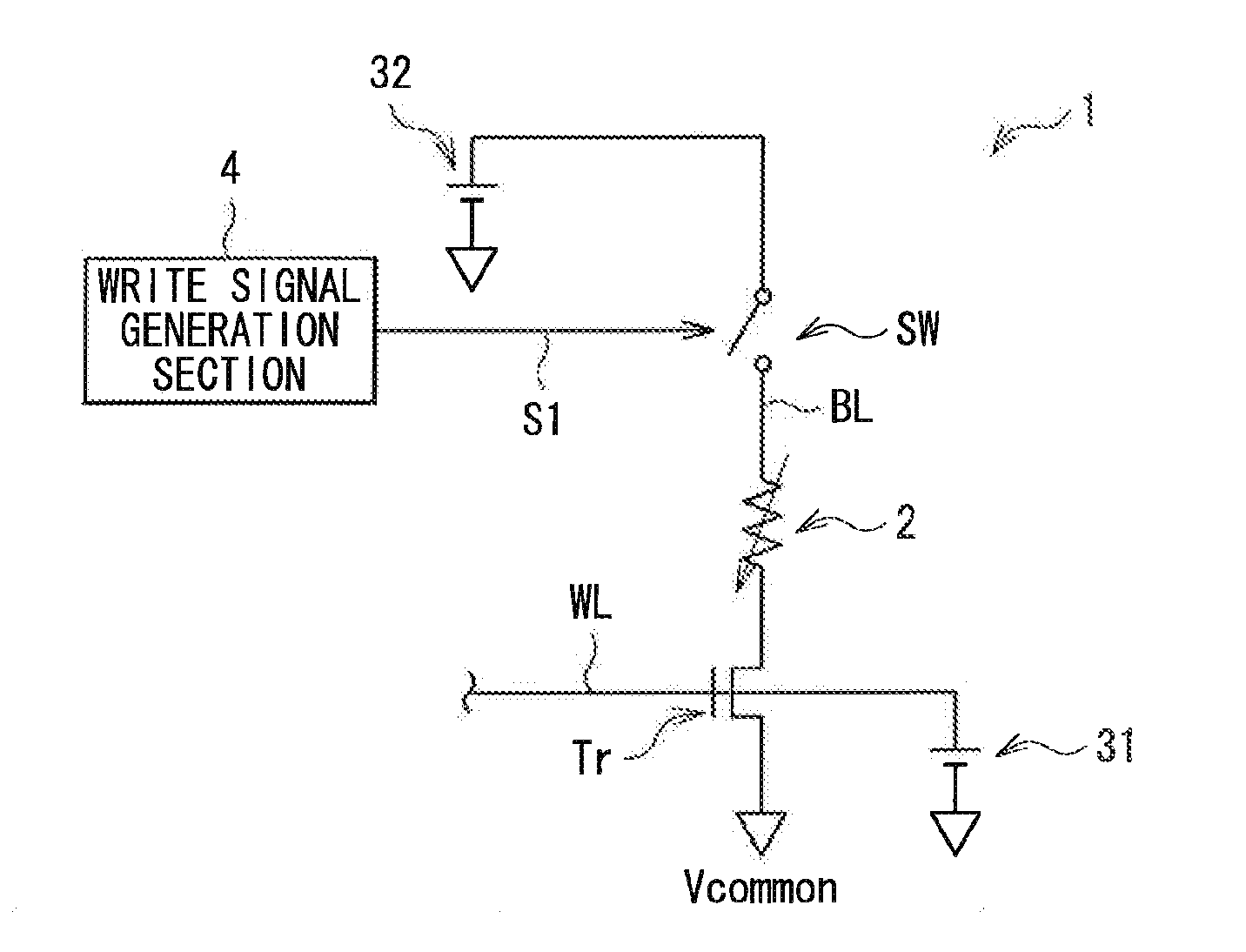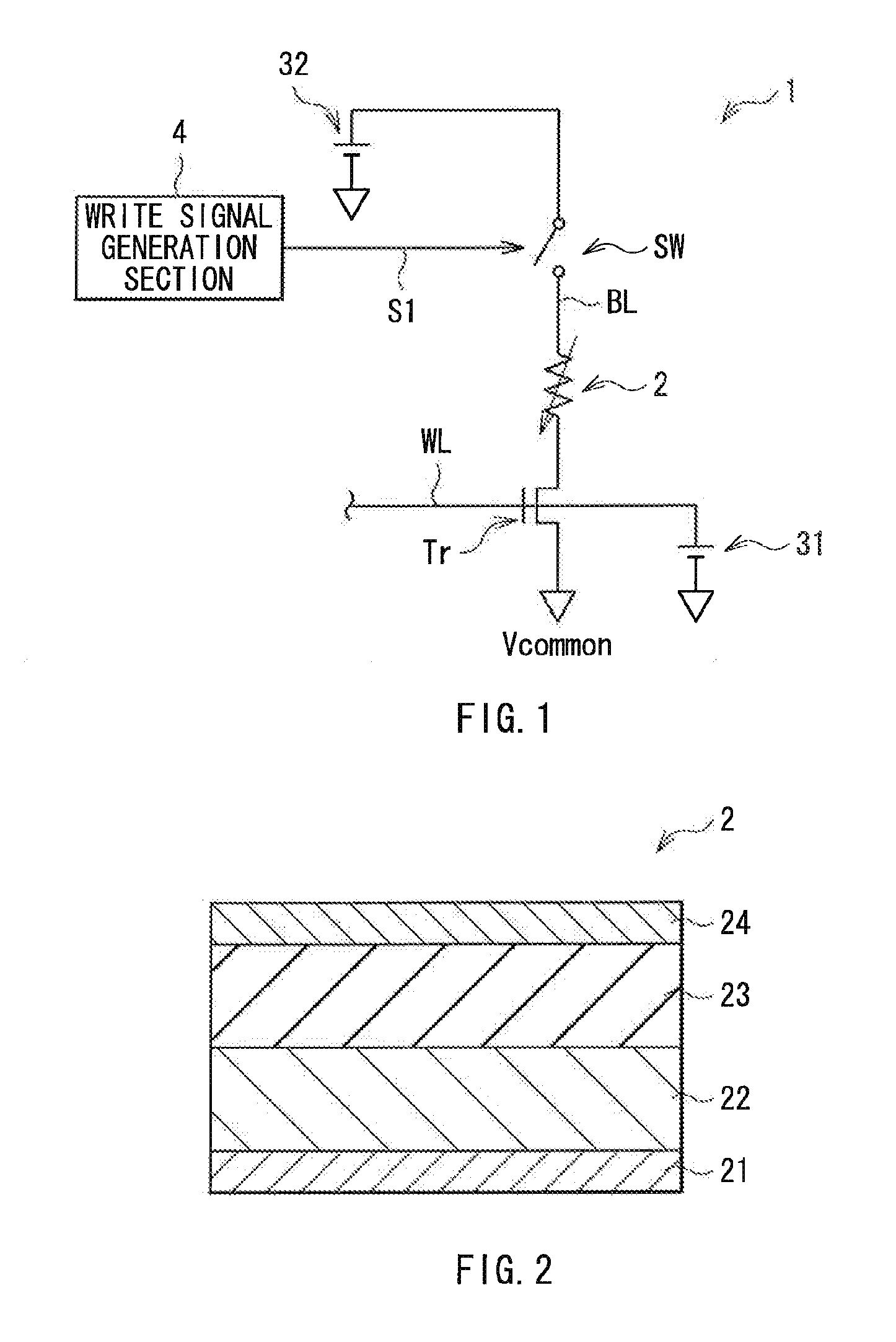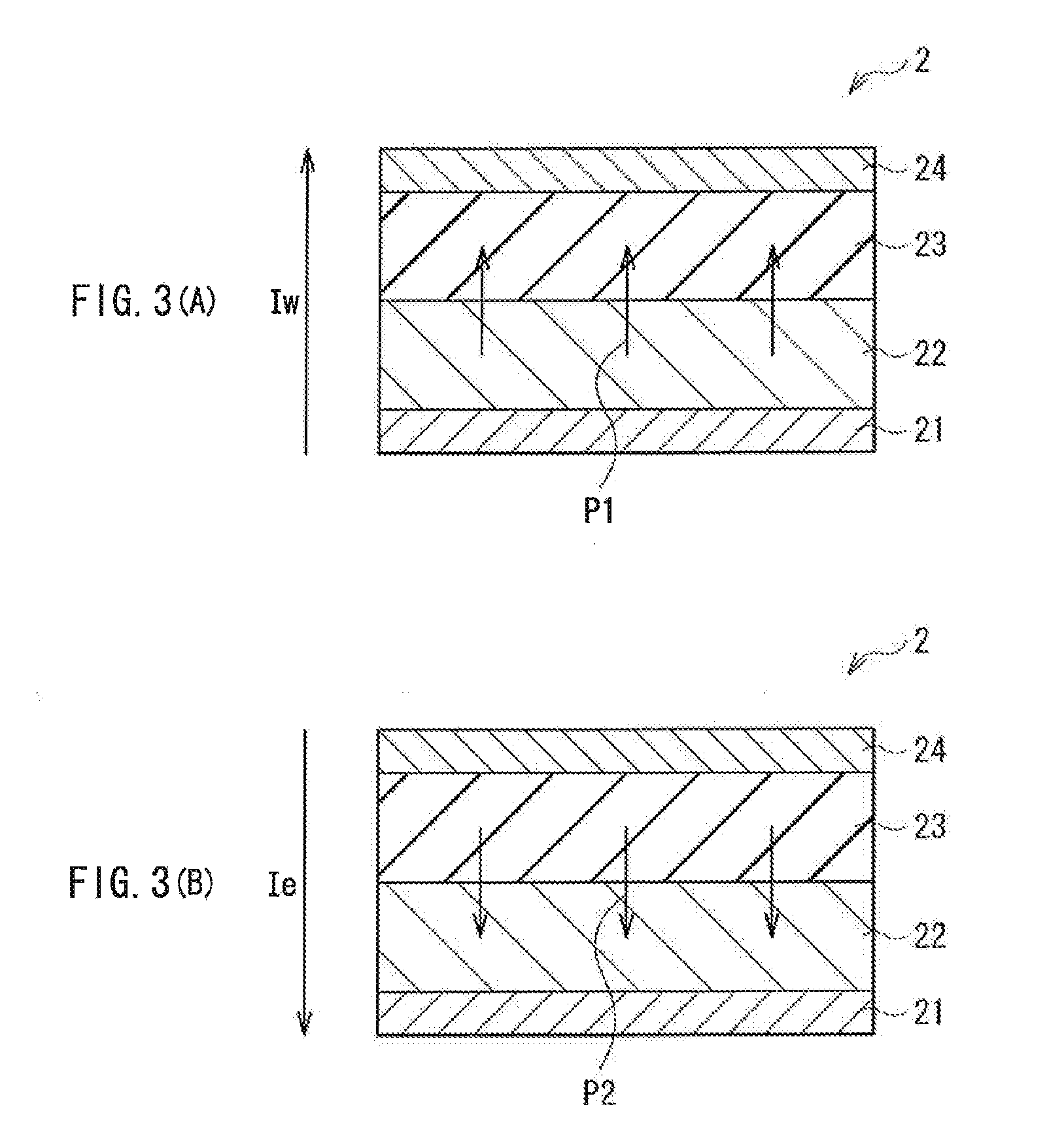Method of driving storage device
a storage device and drive technology, applied in the direction of digital storage, semiconductor devices, instruments, etc., can solve the problems of dielectric breakdown, destructing the resistance element itself, and difficulty in stably holding written data, so as to prevent the diffusion loss of the conductive path, and variable
- Summary
- Abstract
- Description
- Claims
- Application Information
AI Technical Summary
Benefits of technology
Problems solved by technology
Method used
Image
Examples
first embodiment
[0025]FIG. 1 illustrates a circuit configuration example of a memory cell 1 in a storage device to which a method of driving a storage device according to a first embodiment of the present invention is applied. This memory cell 1 includes a variable resistance element 2, a selection transistor Tr, a gate voltage power supply 31, a switch SW, a write voltage power supply 32, and an erase voltage power supply (not illustrated in the figure). In addition, a plurality of the memory cells 1 having such a configuration are arranged, for example, in a matrix form, and thereby the storage device (memory) is configured.
[0026]The variable resistance element 2 includes a pair of electrodes which will be described later, and is configured so that the resistance value is reversibly changed by applying voltages of different polarities (a write voltage and an erase voltage which will be described later) between the pair of electrodes. In addition, a detailed configuration of this variable resistan...
second embodiment
[0048]Next, a second embodiment of the present invention will be described. In addition, same reference numerals are used to indicate components identical to those in the first embodiment, and thereby the description is appropriately omitted.
[0049]FIG. 8 illustrates an example of the data write method according to this embodiment, and specifically illustrates the timing waveform at the time of the data write operation. In addition, the storage device to which the data write method according to this embodiment is applied is the same as that described in the first embodiment, and thereby the description is omitted.
[0050]Here, first, before describing the data write method of this embodiment, the data write operation will be studied in detail. It is considered that this data write operation is configured with two steps. Fist, in the first step, the write voltage is applied between the electrodes 21 and 24 in the high resistance state of insulation properties, and soft-breakdown is gene...
PUM
 Login to View More
Login to View More Abstract
Description
Claims
Application Information
 Login to View More
Login to View More - R&D
- Intellectual Property
- Life Sciences
- Materials
- Tech Scout
- Unparalleled Data Quality
- Higher Quality Content
- 60% Fewer Hallucinations
Browse by: Latest US Patents, China's latest patents, Technical Efficacy Thesaurus, Application Domain, Technology Topic, Popular Technical Reports.
© 2025 PatSnap. All rights reserved.Legal|Privacy policy|Modern Slavery Act Transparency Statement|Sitemap|About US| Contact US: help@patsnap.com



